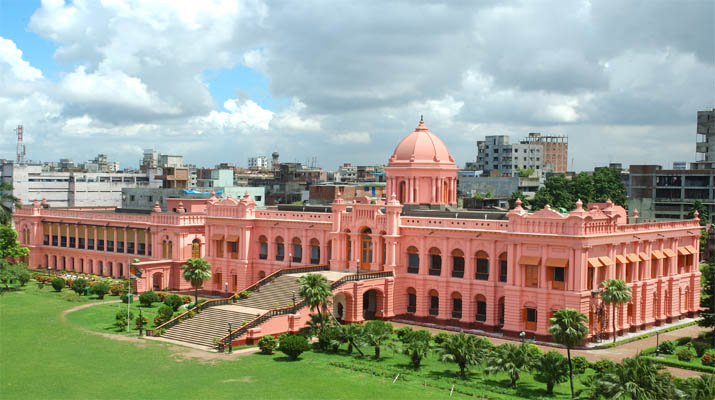- Details
- Hits: 14016
Ahsan Manjil (The Pink Palace)
Ahsan Manzil situated at Kumartoli of Dhaka on the bank of the Buriganga, was the residential palace and the kachari of the Nawabs of Dhaka. It has been turned into a museum recently. It was said to be the Rang Mahal of Sheikh Enayetullah, a zamindar of Jamalpur Pargana (Barisal) during the time of the Mughals. Having purchased it from his son Matiullah, the French made it their trading centre. Khwaja Alimullah bought it from the French in 1830 and converted it into his residence, effecting necessary reconstruction and renovations. Nawab Khwaja Abdul Ghani engaged Martin and Company, a European construction and engineering firm, to make a master plan for their residence.The construction of the palace was begun in 1859 and completed in 1872. Abdul Ghani named it Ahsan Manzil after his son Khwaja Ahsanullah. At that time the newly built palace was known as Rang Mahal and the earlier one was called Andar Mahal.Ahsan Manzil is one of the significant architectural monuments of the country. Established on a raised platform of 1 metre, the two-storied palace measures 125.4m by 28.75m. The height of the ground floor is 5 metres and that of the first floor 5.8 metres. There are porticos of the height of the ground floor, both on the northern and southern sides of the palace. An open spacious stairway has come down from the southern portico, extending upto the bank of the river through the front garden. There was once a fountain in the garden in front of the stairs, though it does not exist today. The spacious north and south verandas of both the floors rest on semicircular arches. The floor is covered with marble.Recognising the historical and architectural importance of the Ahsan Manzil, the government of Bangladesh renovate it completely in 1992 under the supervision of the Directorate of Public Works and Architecture, it was brought under the control of Bangladesh National Museum 20 September in the same year, and it was turned into a Museum.



